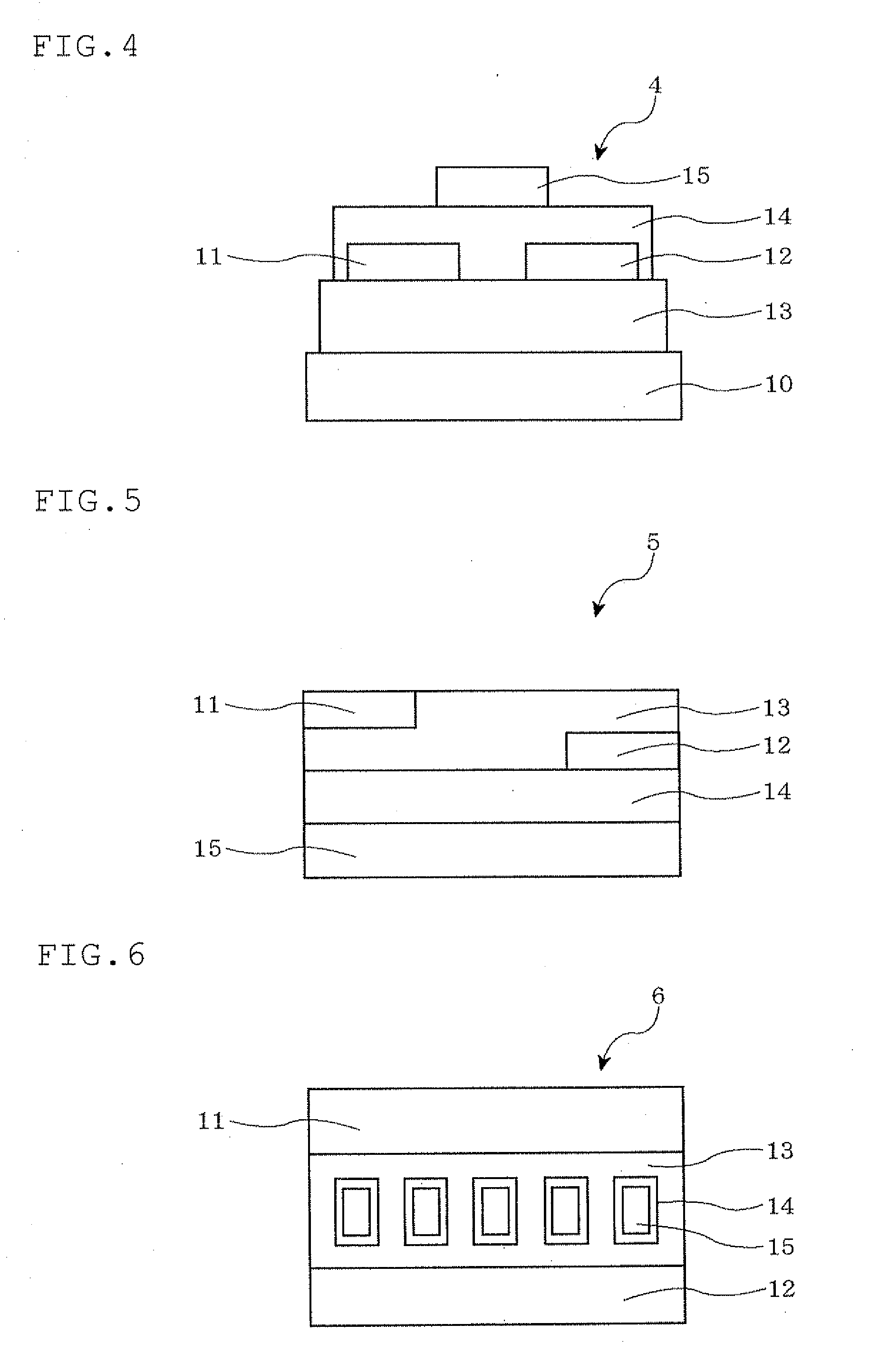Compound for organic thin-film transistor and organic thin-film transistor using the compound
a technology of organic thin film transistors and compound compounds, which is applied in the direction of organic chemistry, chemistry apparatus and processes, and the production of tft using such silicon by cvd apparatuses which are very expensive, and achieves the effect of high response speed (driving speed)
- Summary
- Abstract
- Description
- Claims
- Application Information
AI Technical Summary
Benefits of technology
Problems solved by technology
Method used
Image
Examples
example 1
Fabrication of Organic Thin Film Transistor
[0133]An organic thin film transistor as shown in FIG. 3 was fabricated in the following procedure. First, a glass substrate was subjected to ultrasonic cleaning with a neutral detergent, pure water, acetone and ethanol each for 30 minutes. Subsequently, gold (Au) was formed into a thin film having a thickness of 40 nm by sputtering to form a gate electrode. Then, the substrate was placed in a film-forming section of a thermal CVD reactor. On the other hand, to an evaporation section of a raw material, 250 mg of poly(p-xylene) derivative [poly(p-xylene) chloride (Parylene)] (Tradename: diX-C, manufactured by Daisan Kasei Co., Ltd.) which was the material for an insulating layer, which was put in a petri dish, was placed. The thermal CVD reactor was vacuated by a vacuum pump to a reduced pressure of 5 Pa. Subsequently, the evaporation section was heated up to a temperature of 180° C., a polymerization section up to a temperature of 680° C., ...
examples 2 and 3
Fabrication of Organic Thin Film Transistor
[0138]An organic thin film transistor was fabricated in the same manner as in Example 1 except that Compound (A-3) and Compound (A-5) was used in place of Compound (A-2) as a material for the organic semiconductor layer. In the same manner as in Example 1, the resultant organic thin film semiconductor was p-type driven at a gate voltage VG of −40 V. The on / off ratio of the current between the source-drain electrodes was measured, and the field effect mobility μ of holes was calculated. The results are shown in Table 1.
example 4
Fabrication of Organic Thin Film Transistor
[0139]In the same manner as in Example 1, cleaning of a substrate, formation of a gate electrode and formation of an insulating layer were carried out. Next, the substrate was placed in a vacuum deposition apparatus (manufactured by ULVAC, EX-400), and Compound (A-5) was deposited on the insulating layer at a deposition rate of 0.05 m / s to form a film having a thickness of 50 nm as an organic semiconductor layer. Then, by means of a vacuum vapor deposition apparatus, gold (Au) was deposited thereon through a metal mask into a film having a thickness of 50 nm to provide a source electrode and a drain electrode which did not contact each other, whereby an organic thin film transistor was fabricated.
[0140]In the same manner as in Example 1, the resultant organic thin film semiconductor was p-type driven at a gate voltage VG of −40 V. The on / off ratio of the current between the source-drain electrodes was measured, and the field effect mobility...
PUM
| Property | Measurement | Unit |
|---|---|---|
| Work function | aaaaa | aaaaa |
| Work function | aaaaa | aaaaa |
| Area | aaaaa | aaaaa |
Abstract
Description
Claims
Application Information
 Login to View More
Login to View More - R&D
- Intellectual Property
- Life Sciences
- Materials
- Tech Scout
- Unparalleled Data Quality
- Higher Quality Content
- 60% Fewer Hallucinations
Browse by: Latest US Patents, China's latest patents, Technical Efficacy Thesaurus, Application Domain, Technology Topic, Popular Technical Reports.
© 2025 PatSnap. All rights reserved.Legal|Privacy policy|Modern Slavery Act Transparency Statement|Sitemap|About US| Contact US: help@patsnap.com



